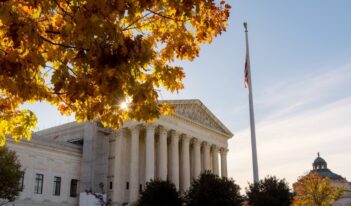
Reagan-era regulatory reform will help restrict rule rescissions under Executive Order 13,771.
Both Presidents Ronald Reagan and Donald J. Trump made regulatory reform a major part of their policy agendas, but their approaches to reform differ diametrically. President Reagan tried to change the U.S. approach to regulation in ways that were designed to enhance economic efficiency by relying on markets and market mechanisms. President Trump, by contrast, is attempting to change the U.S. approach to regulation in ways that would reduce economic efficiency by replacing markets and market mechanisms with commands that are based on his political preferences. President Reagan’s success will doom President Trump’s efforts.
In the area of economic regulation, President Reagan significantly improved the performance of energy markets by deregulating the wellhead prices of oil and natural gas and providing the foundation for deregulation of the wholesale electricity market. By contrast, President Trump has now attempted unsuccessfully to use three different statutes as the basis for an order that would force utilities to use expensive coal instead of less expensive natural gas.
In the area of environmental regulation, President Reagan initiated a movement toward greater reliance on market mechanisms by changing the interpretation of “source” in the Clean Air Act from an individual piece of combustion equipment to an entire plant site. The U.S. Supreme Court upheld that decision in its famous Chevron opinion. That change enhanced economic efficiency by allowing firms to replace economically and environmentally obsolete combustion equipment with new, more efficient and less polluting units without first having to incur the expense and suffer the delay attendant to obtaining a permit to add a new “source” of emissions. President Reagan also ordered the removal of lead from gasoline, even though that change increased the cost of gasoline, because the benefits of the new rule exceeded its costs. By contrast, President Trump is trying to repeal as many environmental regulations as possible even though the vast majority of those regulations yield economic benefits that massively exceed their costs.
President Reagan made his most important contribution to regulatory reform by issuing Executive Order 12,291, in which he ordered all agencies to apply cost-benefit analysis to every major rule and to issue the version of the rule that maximizes the net economic benefits of the rule. Many of President Reagan’s critics were concerned that mandatory use of cost-benefit analysis would make it difficult for agencies to issue many rules. It has not had that effect. As University of Virginia School of Law professor Michael Livermore has explained, the most important effect of Executive Order 12,291 was that it encouraged agencies to use excellent economists to improve the quality of their economic analysis of rules. Since President Reagan issued Executive Order 12,291, agencies have issued thousands of major rules with economic benefits that exceed their costs. According to estimates for one recent ten-year period, the benefits exceed their costs by as much as ten to one.
President Trump’s primary regulatory reform initiative has been Executive Order 13,771. He ordered each agency to rescind two rules for every new rule it issues. In stark contrast with President Reagan’s Executive Order 12,291, Executive Order 13,771 instructs agencies implementing this order to ignore the benefits of rules and to consider only their costs. Thus, if agencies comply with this executive order, the American public will lose the trillions of dollars of net economic benefits that were produced by the thousands of rules issued between 1981 and 2015 after a cost-benefit analysis estimated that their economic benefits significantly exceeded their costs.
Fortunately, President Trump is highly unlikely to succeed in his attempt to force agencies to rescind major rules that yield large net economic benefits. That effort will most likely fail thanks to a combination of President Reagan’s most important regulatory reform initiative—the establishment of a cost-benefit test for regulation—and a Supreme Court decision in which President Reagan suffered one of his few defeats in the area of government regulation.
The Supreme Court opinion had its origins in a promise then-candidate Reagan had made during his presidential campaign. He had given a speech to auto workers in which he committed to rescind the new rule that required passive restraints in all automobiles sold in the United States. But after Reagan became President, when his National Highway Transportation Safety Administration (NHTSA) attempted to fulfill his campaign commitment, the Supreme Court unanimously rejected the attempt in its famous opinion in Motor Vehicle Manufacturers Association v. State Farm Insurance. In the process of overturning the NHTSA rescission, the Court held that an agency cannot rescind a rule without first conducting a notoriously long and resource-intensive notice-and-comment process, and that a reviewing court must then subject any resulting rescission order to the same process of “hard look” review that courts apply to major agency rules.
The vast majority of the major rules that any agency might attempt to rescind under Executive Order 13,771 were issued using the notice-and-comment process. Every such rule was subject to a cost-benefit analysis that previously found that the rule’s economic benefits would exceed or at least justify its costs. And every such rule that had been challenged in court had been upheld by a reviewing court after the court subjected the rule to hard look review.
Given the combination of the legacy of Executive Order 12,291 and the State Farm precedent produced under President Reagan’s unsuccessful attempt to rescind the passive restraint rule, it is hard to imagine that any agency attempt to comply with President Trump’s Executive Order 13,771 will survive judicial review.




